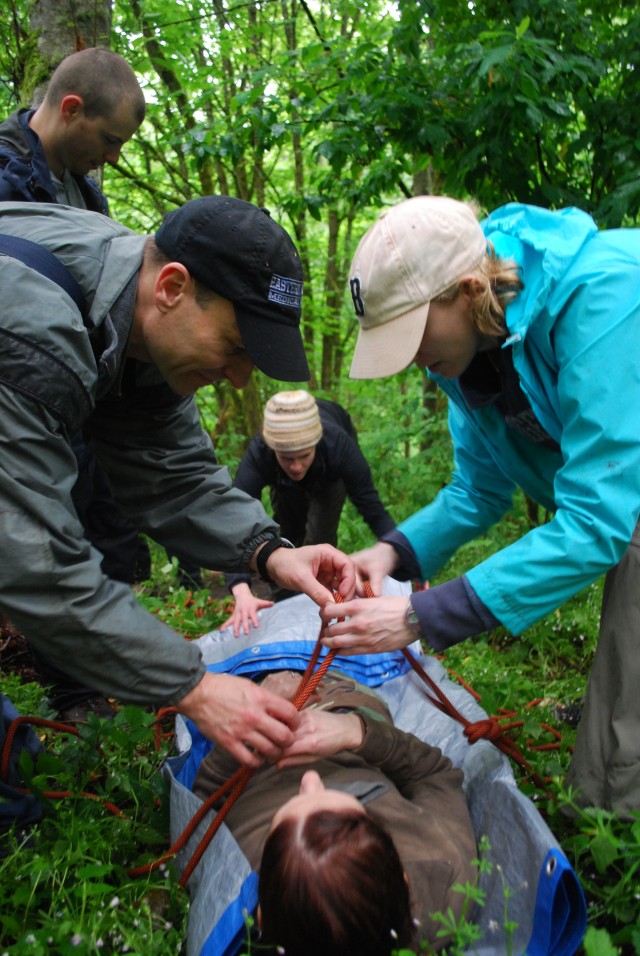
DASH POINT PARK, Federal Way, Wash. - "If you go off the trail, you are wrong," bellowed Col. (Dr.) Ian Wedmore to five soaked Madigan Army Medical Center Emergency Medicine residents who had left the safe confines of the Dash Point Park muddy trails and "broke trail" into the sopping wet, dense tree line. One resident, Capt. (Dr.) Jessa Williams, called out the distance and direction given by the GPS for the other young doctors to follow. After half of a mile of traversing broken logs, avoiding loose soil pitfalls and dodging bush after bush, the group found their way to their next point. "You got to get dirty a little bit when you are playing in the woods," said Resident Capt. (Dr.) Cliff Porter.
Getting lost on trails trying to find points with a map, GPS and first-aid pack while navigating wooded obstacles was all part of the fun for the 30 residents who attended the first Austere Medical Challenge at Dash Point Park May 26. The wilderness medicine training gave the new doctors a chance to experience the rigors of applying medical help to injured people in a wooded environment that won't have the benefit of reaching a hospital or other medical facility within an hour. This is necessary training they'll need when they move to operational positions serving in Iraq or Afghanistan.
The residents learned basic military skills like land navigation and map reading, tactical combat casualty skills and teamwork, which Wedmore said was the most important aspect of the training. "The teamwork among the groups showed that their medical skills were great, but they did have weaknesses in basic military skills," he said. "We'll be hitting land navigation a lot harder in the future."
Instructors gave residents a set of GPS coordinates spread throughout the park that they had to correctly navigate to by plugging into their electronic guidance devices. Once at the point, the residents had to complete a wilderness medical task like applying a C-collar to a patient and transport them with a rope over a giant log blocking the trail. The training was designed to teach altitude illness, cold injuries, applying tourniquets, and stabilizing a spinal injury, among other tasks. "These are exactly the kinds of injuries seen in the wilderness," Wedmore said.
Wedmore said that Madigan would be receiving an emergency medicine fellowship specializing in austere wilderness medicine next month. The fellowship will be the first for the Army and only the fifth nationwide. The fellow will learn about many different types of wilderness medicine in various environments as well as passing that knowledge on to Madigan's doctors, interns, nurses and medics. Primary Care will receive an austere fellow in 2011.

Social Sharing